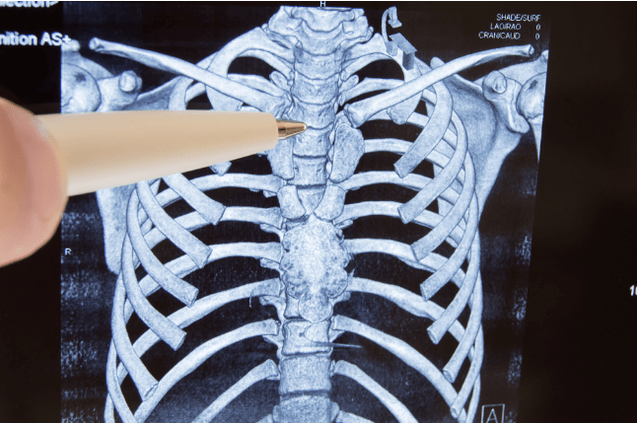Osteocartilage degeneration is a disease of the spine in which the intervertebral disc (sequently the vertebral body, joints, and ligaments) lose their ability to function normally.

At present, the causes of osteochondrosis are considered to be a group of factors that affect the spine in life.Another risk of osteochondrosis can lead to spinal damage and posture damage.Some patients have noticed the link between disease onset and hypothermia.
In fact, habitually
- Neck bone and chondropathy,
- Chest cavity and
- Lumbar spine.
In addition, it should be noted that osteochondrosis is common, characterized by damage to several parts of the spine at a time.
The most common are the cervical and chest shapes, as these spinal departments are subject to the greatest load.
Symptoms of osteochondrosis
There is osteochondrosis, and the patient describes symptoms such as:
- Paroxysmal or shooting pain affected by osteochondrosis;
- physical fatigue and increased pain in the morning;
- The neck, arms, or legs, and chest can give pain.
- Tightening feeling when twisted.
Osteochondrosis also features symptoms of nervous systemic nature in terms of impact:
- Partial Sports Violations (PARESES);
- chicken skin ump, unpleasant feeling in the form of tingling (abnormal) ;
- During palpation, the tension of the muscles corresponding to the affected department was determined.
The disease begins and develops gradually rather than drastically.
It is necessary to distinguish between osteochondrosis and coronary artery disease in the spine (related to coronary artery disease, the occurrence of pain is not related to physical activity, but is caused by side factors: cough, long-term seating).
treat
The same symptoms may be signs of various diseases, which may not occur according to textbooks.Don't try to be treated - consult your doctor.
Osteochondrosis treatment always requires comprehensive methods.In treatment, attention must be required by doctors, such as therapists, rheumatologists, neuropathologists, and physical therapists.The treatment of spinal osteochondrosis depends on the location, the general symptoms and the severity of the disease.
Conservative treatment is designed to eliminate pain symptoms and restore normal functioning of the spine.
The rational nutrition of osteochondrosis greatly promotes the patient's condition and promotes more effective treatment.Read more about the principles of osteochondrosis nutrition in our separate articles.
About 10% of patients undergo surgery.The absolute indicator of surgical intervention in osteochondrosis is due to the occurrence of neurological diseases that clamp the spinal cord itself.
Other indicators of surgical treatment of osteochondrosis are considered as follows:
- prolonged pain periodic attack;
- Increased mobility and suspicion in the spine;
- Drug treatment was ineffective for 3 months;
- The obvious disease prevents the patient from living a fulfilling life.
Surgical treatment methods
Minimal surgical intervention:
- After firing, the injectable preparation-enzyme preparation is applied to the intervertebral disc for scars and the annular fibrous disk.
- Puncture Determination - Part of the poison removal of the intervertebral disc.
- Disha Denervation - Introduces a drug into the intervertebral disc to prevent sensitivity at the nerve ends.
The remaining surgical treatments for spinal osteochondrosis are less gentle.These include:
- Total or partial removal of the intervertebral disc or its hernia - This surgery is designed to relieve compression symptoms.
- Prosthesis of the intervertebral disc - The main task is to repair the affected segment of the vertebrae.
The method of treatment for spinal osteochondrosis provides a prediction for the complete recovery of only 50% of cases.
With timely treatment, the prognosis of life is almost always favorable, but due to many factors, the prognosis of work ability may vary.
Exercise for osteochondrosis
Exercise 1.
Lean your head forward while pressing your woven fingers against your forehead.Put your fingers tightly on the back of the head and on the whiskey - left, right.Head to deal with hand pressure, hand-head pressure.Take 10 seconds.Each action.
Exercise 2.
Rest the tips of the four fingers on each other against the forehead, gently press the entire surface of the palm onto the skin, and extend for 10-40 seconds with soft traction movement.We can perform the same stretching movements on the temple in both longitudinal and transverse directions.Same - on the ears - stretch in all directions, especially the leaves.That.You can improve blood circulation in areas rich in biologically active spots.
Exercise 3.
This massage can improve blood flow in the jugular vein and improve brain nutrition.Sitting accurately, your back is straight.Slowly lift your head backwards to help your chin press back and up.You can slowly turn left and right.Stay at this location for about one minute.For children, 10 seconds is enough.
Exercise 4.
This exercise improves the function of the cervical plexus.Sitting accurately, your back is straight.Slowly lean your head forward and try to touch your chest and chin.Place the braided fingers on the back of the head, forward and upward, lifting the back of the head.This took about a minute to sit.After 15 minutes, you can repeat.
Exercise 5.
Lift your shoulders and try to lower it, free, faster - lasting 15 seconds.Now alternate - one shoulder is upward and the other is down, and it is also 15 seconds.Pull the cervical spine with your palm.






















